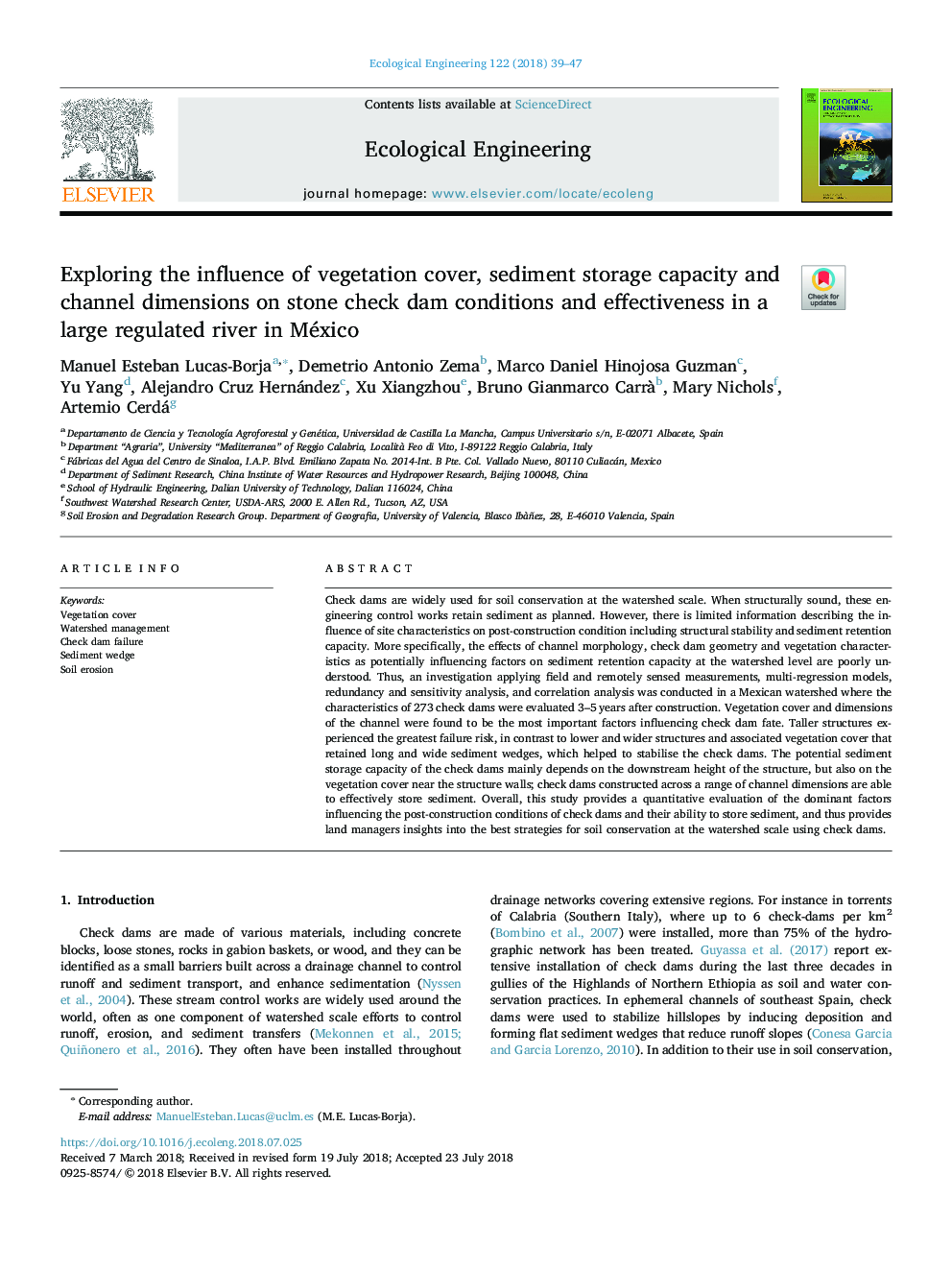| Article ID | Journal | Published Year | Pages | File Type |
|---|---|---|---|---|
| 8847689 | Ecological Engineering | 2018 | 9 Pages |
Abstract
Check dams are widely used for soil conservation at the watershed scale. When structurally sound, these engineering control works retain sediment as planned. However, there is limited information describing the influence of site characteristics on post-construction condition including structural stability and sediment retention capacity. More specifically, the effects of channel morphology, check dam geometry and vegetation characteristics as potentially influencing factors on sediment retention capacity at the watershed level are poorly understood. Thus, an investigation applying field and remotely sensed measurements, multi-regression models, redundancy and sensitivity analysis, and correlation analysis was conducted in a Mexican watershed where the characteristics of 273 check dams were evaluated 3-5â¯years after construction. Vegetation cover and dimensions of the channel were found to be the most important factors influencing check dam fate. Taller structures experienced the greatest failure risk, in contrast to lower and wider structures and associated vegetation cover that retained long and wide sediment wedges, which helped to stabilise the check dams. The potential sediment storage capacity of the check dams mainly depends on the downstream height of the structure, but also on the vegetation cover near the structure walls; check dams constructed across a range of channel dimensions are able to effectively store sediment. Overall, this study provides a quantitative evaluation of the dominant factors influencing the post-construction conditions of check dams and their ability to store sediment, and thus provides land managers insights into the best strategies for soil conservation at the watershed scale using check dams.
Related Topics
Life Sciences
Agricultural and Biological Sciences
Ecology, Evolution, Behavior and Systematics
Authors
Manuel Esteban Lucas-Borja, Demetrio Antonio Zema, Marco Daniel Hinojosa Guzman, Yu Yang, Alejandro Cruz Hernández, Xu Xiangzhou, Bruno Gianmarco Carrà , Mary Nichols, Artemio Cerdá,
